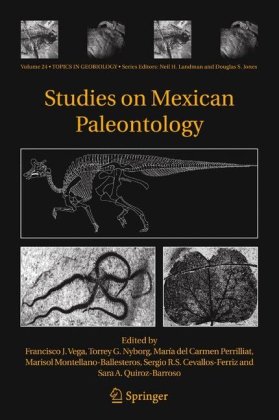

Most ebook files are in PDF format, so you can easily read them using various software such as Foxit Reader or directly on the Google Chrome browser.
Some ebook files are released by publishers in other formats such as .awz, .mobi, .epub, .fb2, etc. You may need to install specific software to read these formats on mobile/PC, such as Calibre.
Please read the tutorial at this link: https://ebookbell.com/faq
We offer FREE conversion to the popular formats you request; however, this may take some time. Therefore, right after payment, please email us, and we will try to provide the service as quickly as possible.
For some exceptional file formats or broken links (if any), please refrain from opening any disputes. Instead, email us first, and we will try to assist within a maximum of 6 hours.
EbookBell Team

4.1
20 reviewsDuring the last few years, the number of contributions to the Paleontology of Mexico has increased considerably. Paleontological work in Mexico has been focused on providing important information for petroleum exploration and specific studies dealing with pollen, foraminifera, radiolaria, dinoflagellates, rudists, and ammonites. Often these reports were published only in local or regional journals and therefore not available to the scientific community at large. The purpose of this book is to offer an updated review of the fossil groups from Mexico, providing their significance to the stratigraphy, tectonics, sedimentology, evolution and paleontology of Mexico whose study has proved to be relevant in stratigraphy, tectonics, sedimentology, and evolution. The fossil record of Mexico ranges from Precambrian to Pleistocene. Almost every Mexican State has reported fossil localities with ongoing studies and potential for the discovery of new localities. Even those localities that have been studied since the eighteen-century, such as the early Cretaceous San Juan Raya, have recently reported new fossil groups. Unfortunately, much of the fossil reports from Mexico have been published in Spanish from local journals, which represent a language barrier to the international community. There is little doubt that the paleontological history of Mexico deserves to be known in other countries. By making this book available to the international scientific community we hope that interest in the fossil record of Mexico will grow.